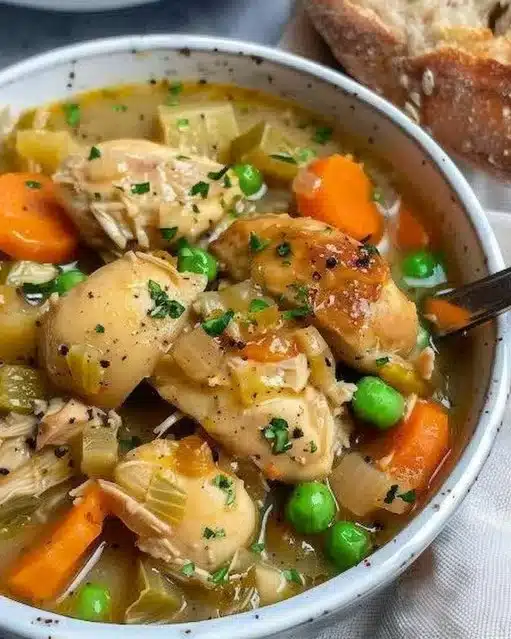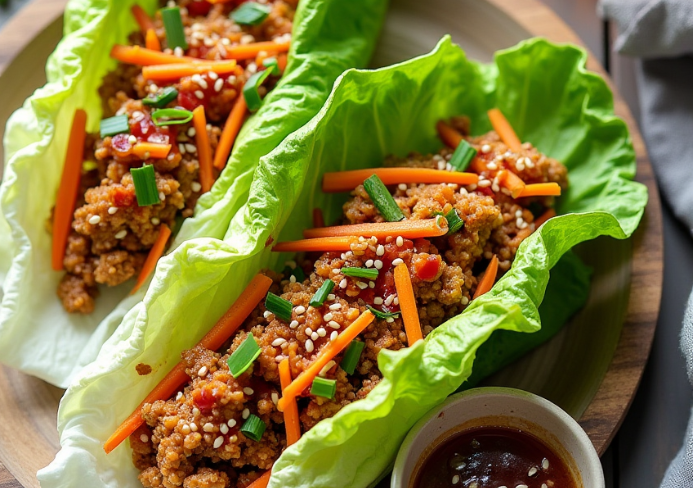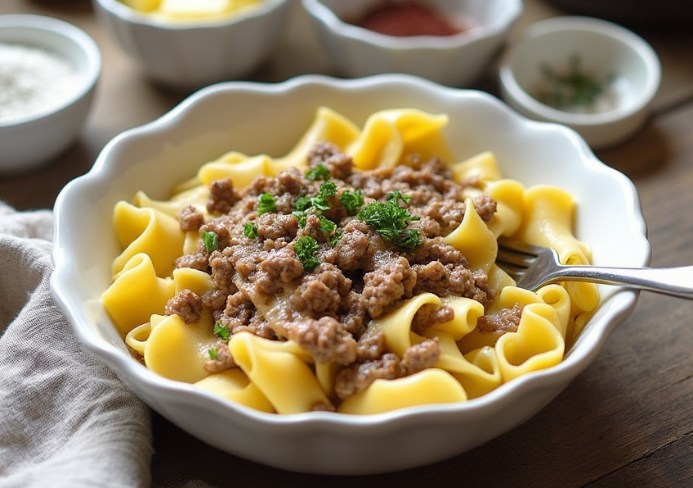Spring Vegetable Pasta: A Fresh & Flavorful Seasonal Delight
As spring blooms, our kitchens beg for lighter, brighter meals that celebrate nature’s seasonal bounty. There’s no better way to welcome the season than with a vibrant bowl of spring vegetable pasta. It’s fresh, fast, and endlessly flexible — the kind of dish that pleases picky eaters, health-conscious foodies, and comfort food lovers alike.
In this guide, you’ll learn how to build the perfect spring-inspired pasta dish, from choosing the best vegetables to mastering quick-cooking techniques. We’ll also cover healthy pairings, nutritional benefits, and common FAQs to keep your pasta nights as fresh and flavorful as spring itself.
Table of Contents
🌿 Why Spring Vegetables Are Ideal for Pasta
Spring vegetables are tender, crisp, and loaded with flavor. They require minimal cooking and pack a nutrient-dense punch. Think of:
- Asparagus with its grassy snap
- Sweet peas bursting with freshness
- Zucchini and squash offering mild, buttery textures
- Artichokes adding depth and bite
- Radishes and snap peas for a crunchy contrast
Choosing the right produce ensures you’re eating with the season. If you’re curious about what’s in season in your region, check out this helpful spring seasonal vegetables chart by the USDA.
These veggies don’t just taste amazing—they’re also packed with fiber, antioxidants, and vitamins. For a closer look at their health impact, explore the benefits of fresh vegetables from Harvard’s Nutrition Source.
🍝 Choosing the Right Pasta Type
Pairing your veggies with the right pasta creates harmony between texture and flavor. You want pasta shapes that can hold sauces and bits of veggies evenly across every bite.
Best pasta types for spring vegetables:
- Penne: Its hollow shape is perfect for catching peas and small diced vegetables
- Farfalle (bowtie): Holds thin slices of asparagus or zucchini well
- Orecchiette: Small “ears” that scoop up veggie pieces and sauce
- Linguine or spaghetti: Great for more delicate sauces, especially with leafy greens or shaved vegetables
Tip: Go for whole wheat or gluten-free versions if you have dietary restrictions.
🍋 Building a Flavorful Base
The secret to irresistible spring pasta lies in a light, aromatic base. You don’t need heavy cream or tomato sauces — instead, rely on ingredients that let the vegetables shine.
Flavor boosters:
- Extra virgin olive oil
- Garlic or shallots (finely minced)
- Lemon zest or juice for brightness
- Herbs: Fresh basil, parsley, and mint are seasonal stars
- Optional: A splash of white wine or vegetable broth to deglaze the pan
Tossing your veggies in this flavorful mixture before adding the pasta will help infuse them with flavor while keeping everything light.

🥦 Top Spring Vegetables for Pasta
Let’s break down the ideal spring veggies and how to prep them:
- Asparagus: Trim woody ends, cut into 2-inch pieces, and sauté or blanch briefly.
- Green peas: Fresh or frozen. Add in the last 2 minutes of cooking.
- Zucchini: Slice thinly or spiralize for texture contrast.
- Snap peas: Trim ends; leave whole or slice on a bias.
- Leeks: Clean well and sauté with garlic.
- Baby spinach or arugula: Stir in at the end to wilt gently.
- Radishes: Thinly sliced or roasted for a peppery edge.
Tip: Aim for color, crunch, and contrast. Combine 3–5 vegetables per dish for best results.
🍗 Protein Add-Ons (Optional)
To make your pasta a complete meal, consider adding some lean protein options:
- Grilled chicken strips
- Sautéed shrimp with garlic and lemon
- Tofu or chickpeas for a vegetarian boost
- Poached egg on top for richness
Add these at the end to maintain their texture and avoid overcooking.
🔥 Cooking the Pasta Just Right
How you cook your pasta can make or break the dish. Here are some chef-tested tips:
- Always cook pasta al dente — firm to the bite
- Salt your water like the sea
- Reserve ½ cup of pasta water before draining — this helps bind the sauce
- Add the cooked pasta directly to the veggie pan and toss together with the reserved water and olive oil or lemon juice
For extra technique advice, see this pro-level breakdown on how to cook pasta like a pro.
🌀 Variations and Substitutions
Spring vegetable pasta is one of the most adaptable dishes you can make.
Dietary substitutions:
- Vegan: Swap parmesan for nutritional yeast or cashew cream
- Dairy-free: Use olive oil or plant-based butter
- Gluten-free: Opt for brown rice pasta or chickpea pasta
- Low-carb: Replace half of the pasta with zoodles (zucchini noodles)
Flavor twists:
- Add crushed red pepper for a kick
- Sprinkle with toasted pine nuts or breadcrumbs for crunch
- Finish with a touch of goat cheese or feta
🥗 Serving Ideas & Pairings
Turn this into a restaurant-worthy meal with these simple additions:
- Light side salad: Mixed greens, radishes, vinaigrette
- Crusty bread: Fresh sourdough or baguette
- Drink pairings:
- White wine: Sauvignon Blanc or Pinot Grigio
- Sparkling water with lemon
🧊 Storing & Reheating Tips
This dish is perfect for meal prep. Here’s how to store it right:
- Refrigerator: Keeps for 3–4 days in an airtight container
- Freezer: Best without leafy greens; freeze for up to 1 month
- Reheating: Use a skillet with a splash of water or broth to prevent drying
Avoid microwaving directly — it can make the veggies soggy.
🥕 Nutritional Benefits
Spring veggie pasta is more than tasty — it’s nutritionally balanced:
- High in fiber from vegetables
- Rich in vitamin C, folate, and antioxidants
- Low in saturated fat when olive oil is used
- Easy to make low calorie with plant-based tweaks
This dish offers a fantastic way to meet your daily vegetable goals while enjoying a comforting bowl of pasta.
❌ Common Mistakes to Avoid
Avoid these common errors for the best results:
- Overcooking vegetables: They should be crisp-tender, not mushy
- Skipping pasta water: It’s key to emulsify and carry flavor
- Too many veggies: Overcrowding can lead to steaming, not sautéing
- Unseasoned pasta: Salt your cooking water generously
❓ Frequently Asked Questions (FAQs)
Q1: Can I use frozen vegetables instead of fresh?
Absolutely! Just thaw and drain them first to avoid excess water.
Q2: What type of pasta holds sauce best?
Short, ridged pasta like penne or farfalle are best for catching veggies and sauce.
Q3: Can I make this ahead of time?
Yes — it stores well for up to 4 days and tastes great as leftovers.
Q4: How can I make this more kid-friendly?
Use fun-shaped pasta and go easy on bitter greens. Add a sprinkle of parmesan cheese on top.
Q5: Which herbs work best in spring vegetable pasta?
Fresh basil, mint, and parsley are perfect. Add them at the end for maximum flavor.
✅ Final Thoughts
Spring vegetable pasta is a celebration of seasonal produce, combining vibrant flavors, health benefits, and endless customizations. Whether you’re cooking for yourself or a crowd, this dish never fails to impress.
With simple techniques, quality ingredients, and a bit of culinary curiosity, you can make a meal that tastes like sunshine in every bite.






